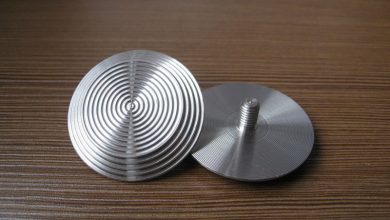Understanding How CNC Machines Actually Work in Practice

Did you ever think that machines and computers could meet and provide so much precision and efficiency in the metal or manufacturing industry? Well, that is exactly what CNC machines are.
They stand for Computer Numerical Control. In short, everyone calls them CNC. These machines are used to create multiple items.
Utilizing this type of machining is the process of using a machine tool that is driven by a computer. The computer takes solid pieces from another solid and produces different shapes. These machines are heavy-duty and can create things out of metal, aluminum, wood, plastic, and other types of hard materials.
Theoretically Speaking: How Do They Work?
Let’s look at it this way, the actual CNC depends on instructions that are digitally sent to it. These are usually made on computer-aided manufacturing software. A few examples of these types of software could be MasterCAM or SolidWorks.
From there, a g-code that the software rights connects to the machine. The code is comprehended by the machine and this is how it operates. How this works is by the computer program within the machine.
It works by interpreting the design and this is what directs cutting tools to cut and outline desired shapes from certain workpieces.
A good way to think about this is how it is a form of automated control over different machining tools. A few examples of those tools could be drills, 3D printers, or lathes.
Theoretically speaking, it’s the perfect mesh of mechanics with smart manufacturing programming. This combination creates a highly automated system for metalworking and fabrication production.
How Are They Actually Used in Practice?
CNC Machining can consist of drilling, milling, cutting slots, and routing. These machines are incredibly productive and they use subtractive manufacturing technology. How it works in practice is pretty simple. Parts are produced from a solid block by removing materials from that solid.
It then controls a variety of cutting tools to reach the desired product. This is how CNC machines work in practice and it’s important to remember that they don’t rely on manpower after they are set up.
Because of this, CNC machines will usually provide a higher rate of productivity than other machines that depend on physical manpower for production.
How to Use CNC Machines
Using a CNC machine isn’t completely easy, but it is learnable. A CNC machinist will usually have to gain skills in both metalworking and programming.
Usually, a CNC machinist will have attended a technical trade school or participated in an apprenticeship program to gain the skills needed to operate this type of machine.
If you are interested in Custom Metal Fabrication & Welding, you may want to consider learning how to use a CNC machine or even becoming a certified CNC machinist
To do this, you have to see the bigger picture, which in the case of CNC machinery, it’s three dimensions.
The components consist of the feedback system, a drive-forward motion system, and the command function itself. The software does the hard part, as the machine has to be directed on how to create complex pieces across a wide range of shapes and this is the purpose of the software.
However, the machinist is the person who is installing, troubleshooting, and monitoring the software that runs the machine.
Efficiency at Its Finest
The difference between CNC theory and reality wasn’t too far apart and that’s because it’s not. CNC machines have created a way to alleviate the need for excessive and prolonged manpower, work hours, and sometimes dangerous projects.
If you’re ready to dive deeply into CNC functionality, you’ve already covered the basics so try getting your hands dirty with some machinery, or in the case of CNC technology, you won’t have to get your hands dirty. Check out the rest of our website for more like this.






